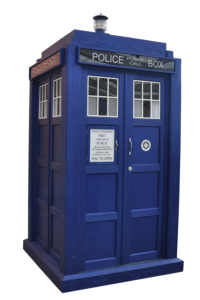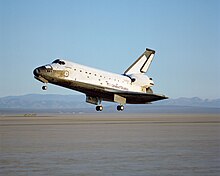
It’s flashback time! This editorial was originally posted on DeviantArt.Com, on December 8, 2006. Keep that in mind when reading this, because a lot of this may sound dated.
 Last week, Dr. Stephen Hawking, one of the most intelligent men on Earth, announced that humanity needs to start expanding to other planets in order to preserve the species and secure our future. A single asteroid, freak disease, or extreme natural disaster could erase humanity from creation. He’s ultimately right, but I think he’s jumping the gun.
Last week, Dr. Stephen Hawking, one of the most intelligent men on Earth, announced that humanity needs to start expanding to other planets in order to preserve the species and secure our future. A single asteroid, freak disease, or extreme natural disaster could erase humanity from creation. He’s ultimately right, but I think he’s jumping the gun.
Before I continue I want to make it clear that I am a strong supporter of the space program. One of my earliest memories is the Apollo 11 landing. The future of humanity does involve outer space, on some level. I honestly believe that, and I would love to see humans building new lives on Mars, the Moon, or some other place. But with all due respect to Dr. Hawking, it’s not likely to happen soon.
The technology to travel to other planets has been around since the 1980’s. Dr. Robert Zubrin, is his book The Case for Mars, outlines how humans could – in fact must – colonize the red planet. The trip wouldn’t be as difficult as many people think. It would be time consuming, and uncomfortable, but it can be done. Such an operation would also be very expensive, but given enough time and proper management of the project, the money can be pulled together. So why haven’t we followed Zubrin’s and Hawking’s advice?
Robert Zubrin, while brilliant, has blinders the size of Jupiter. Because the technology to travel to the other planets exists, he can’t understand why we (as a species) aren’t doing it. Zubrin, like many “Spacers” – Hawking included – doesn’t take the human element into consideration when making proclamations. We haven’t built moon bases or colonized Mars for a very simple and very human reason: We don’t want to.
The idea of migrating off-planet is a concept that most humans can’t (or won’t) psychologically accept. For many, the concept of life without Mother Earth is too alien to even consider, while others see it as an ultimately pointless exercise (“There’s nothing worth while out there, so why the hell would I want to go?”). Not everyone feels this way, but indications are that the majority of us do. It’s not hard to understand why. This world is rife with starvation, war, plagues, injustice, and various other ills that are probably going to keep us occupied for some time to come. Space development – on any scale – is seen as a complete waste of time and a diversion from far more pressing issues. However, if space can be used to directly address everyday concerns that effect the average Joe and Jane, it might start gaining greater acceptance.
My own suggestion, for what it’s worth, is to send out more Voyager-style probes to further examine the Solar System, and have them concentrate on specific types of resources. One popular Spacer mantra is the idea of mining the asteroid belt for its mineral wealth. “OK,” says the skeptic, “what mineral wealth?” I suggest we send a group of probes – robotic prospectors – to the belt and find out what those rocks have to offer. If they have useable ores, then we can talk about mining. Remember, the California gold rush happened after gold was discovered.
Another example is Lunar Helium-3 for use in fusion reactors. That’s a great idea, but we don’t have fusion reactors yet, let alone ones that need He3! That idea isn’t likely to get widespread support until a prototype is taken off the drawing board and demonstrated, or at least built and given base tests. Now, if some folks were to put together some prototype reactors, and then convince NASA (or whoever) to let them go to the moon, load up with He3, and test-drive the things, public interest is likely to follow. Especially if one of them works!
[Sidebar: Does anyone want to send a ship to the moon and fill a hopper with Helium-3 rich regolith, then bring it back to Earth for use in fusion research? That is a good idea, and it is something we can do!]
I could come up with other examples, but you probably get my drift. If space resources can help the problems of the here and now, then by all means let’s go for it! But let’s concentrate on short term, tangible results to real, current problems, before we start embarking on a grand scheme like trans-planetary migration or interstellar travel.
Dr. Hawking is a brilliant man, and I agree with him that we need to move out into other planets. But not today.

The opinions expressed in this essay are mine, and mine alone. Dr. Hawking and Dr. Zubrin would probably take umbrage at what I’ve said, and they would be entitled. But, this is the opinion of a librarian from North-central Virginia, so I’m probably not worth their time.
Also, things have changed. With the Orion program starting up, the possibility of moving into space appears more likely now than it did when I originally wrote this. But even so, I still think it’s a bit early to start planning a mass, species-encompassing trans-planetary migration.






